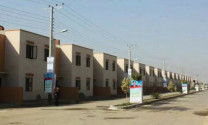Dealing with the population explosion
Pakistan was a country of 34 million people in 1951, including the then East Pakistan

Dealing with the population explosion
Most of Pakistan’s problems arise not just due to lack of resources, but due to the mismanagement of issues. The government can only overcome these challenges by turning the country into a progressive and forward-looking state and that will only be possible if it identifies the root causes of the problems it faces and addresses them.
The National Economic Council has acknowledged that there is malnutrition across the country in its report before the National Assembly while holding the agriculture sector responsible for this. Children are our future, yet a large percentage of those under the age of five are suffering from severe malnutrition. At the same time, our policymakers are faced with the implications of rising unemployment in the country. Issues like poverty, unemployment, health, illiteracy and lack of justice have contributed to this issue.
If we analyse all these problems minutely, we’ll realise that many of them arise due to the rapidly rising population of the country. Pakistan was a country of 34 million people in 1951, including the then East Pakistan. The population has since then risen rapidly despite the recent decline in the population growth rate. At present, 70 per cent of the population is living either under, on or just above the poverty line, on less than $2 a day. Women, marginalised groups and children bear the brunt of the scanty resources available to cater to them.
Pakistan faces serious socioeconomic and political crises. The condition of its housing sector also presents a dismal picture. The state finds it hard to provide its citizens a healthy living environment and other amenities of life. Shortages of electricity, water and wheat have become serious challenges and things will deteriorate further if the population continues to rise at the current rate. A control in the population growth rate is the only way to deal with the population explosion. This can help create a balance between the resources available and their consumption.
Published in The Express Tribune, January 11th, 2016.



















COMMENTS
Comments are moderated and generally will be posted if they are on-topic and not abusive.
For more information, please see our Comments FAQ